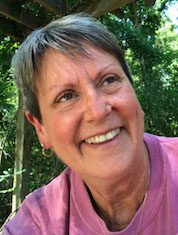 While I waited for a flight to Savannah, a pigeon walked the perimeter of the gate area inside the Newark airport. He was cautious, doing that bob and weave thing with his head, his beak and shoulders always preceding his prominent breast. From a distance, he appeared to strut between the rows of airport seats, stopping briefly to pick up stray bread crumbs from sloppy travelers too harried to notice or care about wayward grains from crust. I found beauty in his presence, and yet I was saddened to think that he might be a prisoner in a cage of endless corridors and moving sidewalks.
While I waited for a flight to Savannah, a pigeon walked the perimeter of the gate area inside the Newark airport. He was cautious, doing that bob and weave thing with his head, his beak and shoulders always preceding his prominent breast. From a distance, he appeared to strut between the rows of airport seats, stopping briefly to pick up stray bread crumbs from sloppy travelers too harried to notice or care about wayward grains from crust. I found beauty in his presence, and yet I was saddened to think that he might be a prisoner in a cage of endless corridors and moving sidewalks.
I remembered my curled up bag of sunflower seeds in a side pocket of my briefcase, and I decided to pursue him, tossing seeds onto the carpet like an old man on a bench in New York’s Central Park. I caught the sour glance of a stewardess, a bit disgusted by my attempts to feed the bird. When the pigeon began to follow me, aware of the source of his airport manna, another woman looked up from her magazine and seemed to pass me off as a bit “touched.” When I got down on my knees to feed him under a chair, I had indeed lost every ounce of any professional posture I may have had.
The bird was beautiful. He wore his white and charcoal feathers like a shiny coat of armor. It wasn’t until I was on the floor with him, becoming a more trustworthy human being, that I noticed the condition of his feet. In fact, his right foot was a stump, and his left foot was gnarled and twisted, with only one sharp talon, long and circular, an avian ingrown toenail. Suddenly, the bird’s beauty changed from my casual observations of his color and build, to pity and wonder over what might have happened to disfigure him, and if the environs of the airport terminal had become a safe haven for this disabled creature.
At home, one of my favorite pastimes during my near daily trek from Lady’s Island to Port Royal and back, is to spot check the activity in an osprey nest near Cat Island at the foot of the McTeer Bridge. I wait for the annual return of the sea hawks every spring. I anticipate the appearance of one or two small white heads cresting the stick nest built on a platform at the top of a telephone pole anchored in the marshy borders of the Beaufort River. The parents, presumed to be mates for life, are majestic and dutiful. I ponder their “high life,” and as the spring begins to bake in our rising temperatures, and the changing atmospheric pressures molt skins of rain and wind, I fret for the safety of this raptor family, but understand that the species has withstood the tests of man and time, and continues to survive in their life by the sea.
Bluebirds have built a nest in my fencepost birdhouse this year. Generally, the location is quiet with minor foot traffic by residents and pets, but the cat next door is aware of her new neighbors and she balances on my fence like an Olympic gymnast to survey the nest’s activity. When I pull my car into the driveway and spot her sitting on top of the birdhouse, or leering from a post, I park my car and jump out to shoo her away with my loud voice, and hope that my mother or I will prove to be worthy sentries when the sound of a new brood echoes from the box. Snakes and raccoons are bluebird predators too. My backyard is a more dangerous habitat than I realized when we bought our house eight years ago.
The habitats of my make-believe aviary are a metaphor for the lifestyles I have implemented in my daily existence. Almost every week, I find myself bobbing and weaving around other waiting passengers, hunting for an undiscovered electrical outlet instead of sandwich crumbs. I devour sunflower seeds to regain energy as I patiently wait for the opportunity to take flight. I am at the mercy of the airlines, crippled by delays, mechanical failures, and overbooked flights, yet always anticipating something better upon my arrival, either in my progress at work or my return to my family. My small three-bedroom home is my nesting box, and my brood consists of a dependent parent and two needy dogs. I believe I have a mate for life in my husband, and my family’s predators take the guise of mortgage payments, natural disaster, sickness, mosquitoes, and ticks. But it is the wild and unsettled part of me I crave most.
I love the osprey. I watch that nest every spring because I draw strength from the example of resiliency and commitment this bird of prey exhibits. The osprey’s call is unique and identifiable, and I believe my voice shares those same qualities. I match my dedication to one mate and my brood to the fish hawk, and it is only through the grace of God, the mercy of nature, and the dependability of the air compressor on my HVAC unit that I am able to weather any storm or the oppressive heat of a Lowcountry summer. The osprey loves the water and depends on the bounties of his tidal home. I do too.
I am not above crawling around on an airport floor to feed a crippled pigeon. I will defend a baby bluebird in my hope that he will grow to survive and help me fend off the attacks of insects on my garden. I aspire to the elevations of God, praying for the integrity and strength to withstand my temptations of resentment, judgment, and fear.
Having a pigeon visit me in a New Jersey airport was a surprise. The miracle is in the opportunity to feed my spirituality in the small snapshots of daily life around me. My joy rests in the fact that today my lessons come from the birds.







